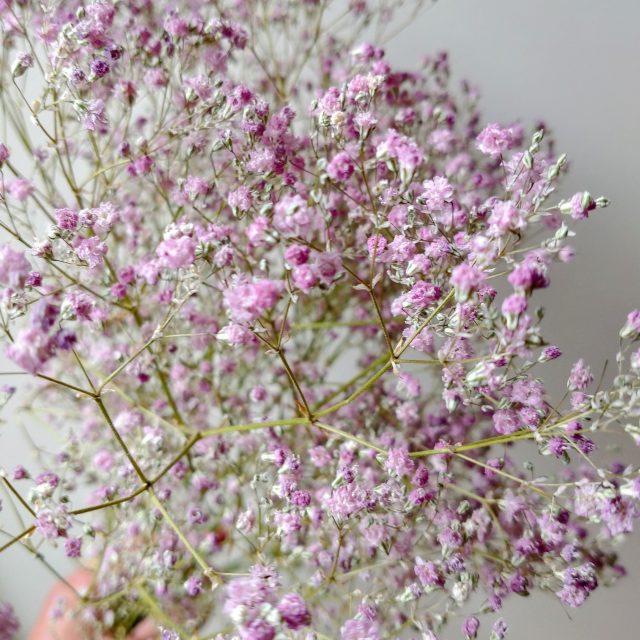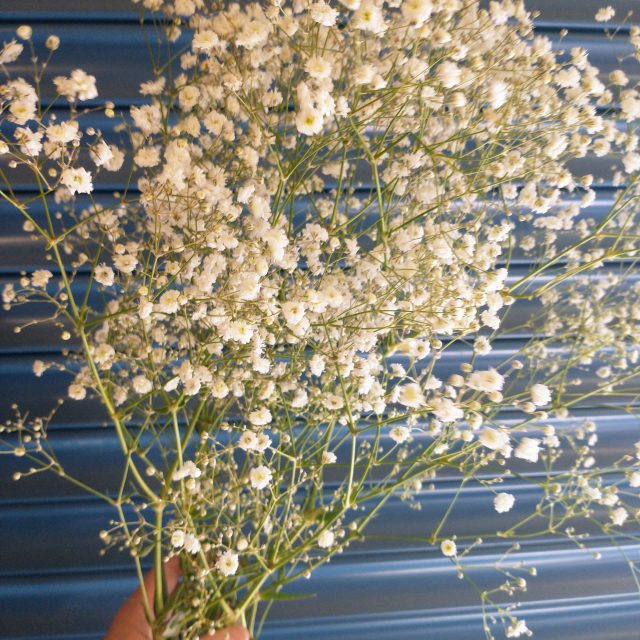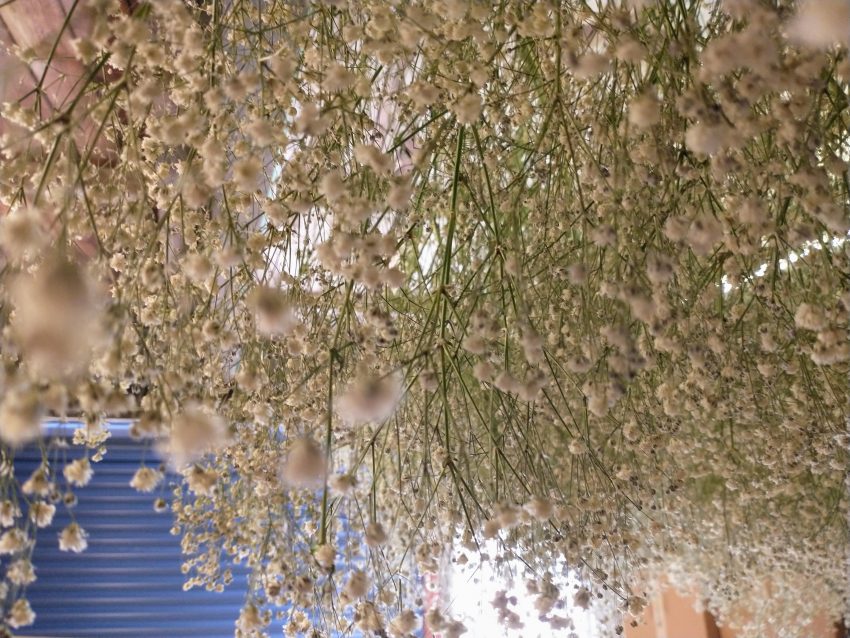Gypsophila, commonly known as baby’s breath, is a popular filler flower loved for its airy, delicate look. The tiny white blooms add beautiful texture and a romantic feel to floral arrangements and bouquets. Luckily, gypsophila dries very well, so you can enjoy these elegant flowers all year long!
Drying gypsophila properly is important to preserve the flowers’ fresh appearance. With the right techniques, you can dry gypsophila quickly and efficiently. Read on for a complete guide on how to dry baby’s breath fast for everlasting beauty.
Gathering the Flowers
Start by cutting fresh gypsophila stems when the blooms are fully open The best time is mid-morning after the dew has evaporated. Use clean, sharp scissors or gardening shears to snip the stems just above a leaf node
Select the freshest most pristine blooms. Avoid any flowers that are browning wilting, or damaged. Carefully gather the cut stems into a bouquet, being careful not to crush the delicate blossoms.
Freshly picked gypsophila will dry the quickest, but you can also purchase freshly cut stems from a local florist or flower market. Just be sure they are vibrant and healthy.
Preparing the Stems
Once you’ve gathered your gypsophila, prep the stems for drying. Start by filling a bucket with warm water and floral preservative. Submerge the stem ends in the water immediately after cutting.
Let the stems hydrate for at least one hour. This allows them to absorb plenty of water so the flowers stay hydrated through the drying process. Trim the stems to your desired length using a sharp knife or pruners. Aim for 6 to 12 inches long.
Remove any leaves, side shoots or secondary blooms. This encourages faster, more even drying. Make sure to re-cut the stems under water. Keeping them immersed prevents air bubbles from forming over the cut ends. Air bubbles will block water uptake.
Choosing a Drying Method
There are a few different methods you can use to dry gypsophila rapidly. Each has its own benefits depending on your timeline, desired results and available materials.
Air Drying
Air drying is the most straightforward approach. Simply gather your prepared gypsophila stems into small bunches secured with rubber bands or string. Hang them upside down in a warm, dry, dark space with good air circulation.
The blooms will dry best at temperatures around 70-80°F. Drying time varies based on humidity levels, but gypsophila typically air dries within 1-2 weeks. Gently shake the bunches occasionally to redistribute flowers as they shrink.
Desiccant Drying
For faster results, use a desiccant drying method. This involves packing the flowers in a breathable material surrounded by silica gel beads or sand. The desiccant absorbs moisture rapidly from the delicate blooms.
You’ll need an airtight container like a plastic bin or glass jar. Place a 1-2 inch layer of desiccant at the bottom. Cover with a thin layer of paper towel. Arrange a single layer of flowers face-up. Add more desiccant all around and on top.
Seal the container and let sit for 4-7 days. Check periodically until the flowers are crisp. Pour out the desiccant and re-use it to dry more flowers. This method can dry gypsophila in less than a week!
Microwave Drying
Another ultra-fast way to dry gypsophila is using a microwave. While not quite as effective for preserving the flowers long-term, it’s great for speeding up the process.
Start by placing the prepared blooms face-up on a paper towel. Cover with another towel. Microwave in 30 second intervals until the flowers are dry and crisp, checking frequently. This usually takes 1-3 minutes total, depending on your microwave power.
Let the flowers cool completely before using. Be very careful, as they will be extremely hot and fragile right out of the microwave. With care, this flash drying method can dehydrate gypsophila in mere minutes!
Glycerin Drying
For gypsophila you want to enjoy in floral arrangements, consider glycerin drying. This method preserves the flowers’ color and realistic texture.
Make a glycerin solution using 1 part glycerin and 2 parts hot water. Remove the bottom 2 inches of stem from your flowers. Submerge the remaining stems in the solution.
Let sit for 1-2 weeks until the blooms feel firm. Remove and allow to dry completely upside down on paper towels. The glycerin replaces moisture in the flowers, allowing them to remain vivid and lifelike.
Caring for Dried Gypsophila
Once your gypsophila is fully dry, you’ll want to take a few extra steps to help the blooms last. Start by gently brushing away any desiccant or debris from the flowers using a soft paintbrush.
To deter shedding, spray the blooms lightly with hairspray or floral sealant. Let dry completely. Avoid over-spraying, as too much moisture can cause the flowers to wilt.
Bundle the dried stems together using floral tape or rubber bands. Trim the ends evenly for a clean look. Store in an airtight container away from moisture, sunlight and heat to prevent damage.
With proper care, dried gypsophila will last for many months, or even years! Enjoy using the everlasting blooms in floral crafts, wedding bouquets, home decor and more.
Drying Gypsophila for Long-Lasting Beauty
Drying gypsophila is an easy way to preserve these gossamer-like blossoms for endless enjoyment. With the right techniques, you can dry baby’s breath quickly and efficiently for gorgeous results.
Air drying works great if you’re not in a rush. For speedier results under a week, use desiccant or microwave drying. And for realistic, supple flowers, try glycerin. Just be sure to start with fresh, vibrant blooms and prep the stems properly.
Follow these tips for successfully drying gypsophila in no time. Let us know how your dried flowers turn out in the comments below! We’d love to see your beautiful dried gypsophila bouquets and arrangements.
Gypsophila aka Baby’s Breath make delicate dried flowers
These tiny flowers are delicate and until recently were available in white only. You can now buy a natural pale pink Gyp or white Gyp that has been colored different bright or soft colors. There is also often the choice of chemically preserved or air dried Gyp.

It’s called Baby’s Breath because the little white flowers are so delicate. This is also why it’s so popular at weddings. It’s commonly used in hair adornments and flower crowns as well as bridal bouquets and venue decorations.

Long lasting Gypsophila for weddings
Gypsophila is easy to find in fresh form, but the dried flower is becoming more popular for weddings because it can be used to make bridal bouquets and other items ahead of time. They can also be treasured after the event as a keepsake and travel well when packaged correctly.

Chemically preserving Gyp can be done by treating it with glycerine, which makes the stems bendable. Dye is often added as well. When flowers are preserved this way, they can cost twice as much as when they are air dried, and the colors can change. Chemically preserved and dyed Gyp often has stems in surprising colours!.
How To Dry Your Own Baby’s Breath
How do you Dry Gypsophila?
There you hang the gypsophila in small bunches with the flowers facing down. The thicker the bouquets, the longer the drying time and the higher the risk of mold forming. So that the gypsophila dries quickly, the humidity in the drying area should be as low as possible. Only leave the gypsophila hung there until it is really dry.
How do you know if Gypsophila flowers are dry?
If the baby’s breath flowers become papery already, they are dry enough to use. If they don’t give you the papery feel when touching, be patient to allow them more time for complete dryness. Continue checking them after a couple of days. Remove the elastic bands from the bundles of Gypsophila drying when the flowers are entirely dry .
When should Gypsophila be dried?
The best time to cut gypsophila to dry is around noon, around 11:00 a.m. to 3:00 p.m. The plants should be dried from the dew and the flowers should be straight open. If you need large quantities of dried gypsophila, then cut back several plants completely for the first flowering. These plants will sprout and bloom again.
Can Gypsophila be dried?
You can also use the dried gypsophila for fresh bouquets. Table decorations and bridal bouquets are often made with gypsophila. Gypsophila hardly changes during the drying process.
- The Ultimate Guide to Growing Strawberries in Raised Beds - August 8, 2025
- No-Dig Garden Beds: The Easiest Way to Grow a Beautiful Garden - August 6, 2025
- How to Protect and Preserve Wood for Raised Garden Beds - August 6, 2025

